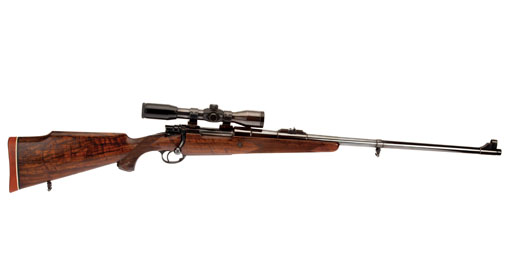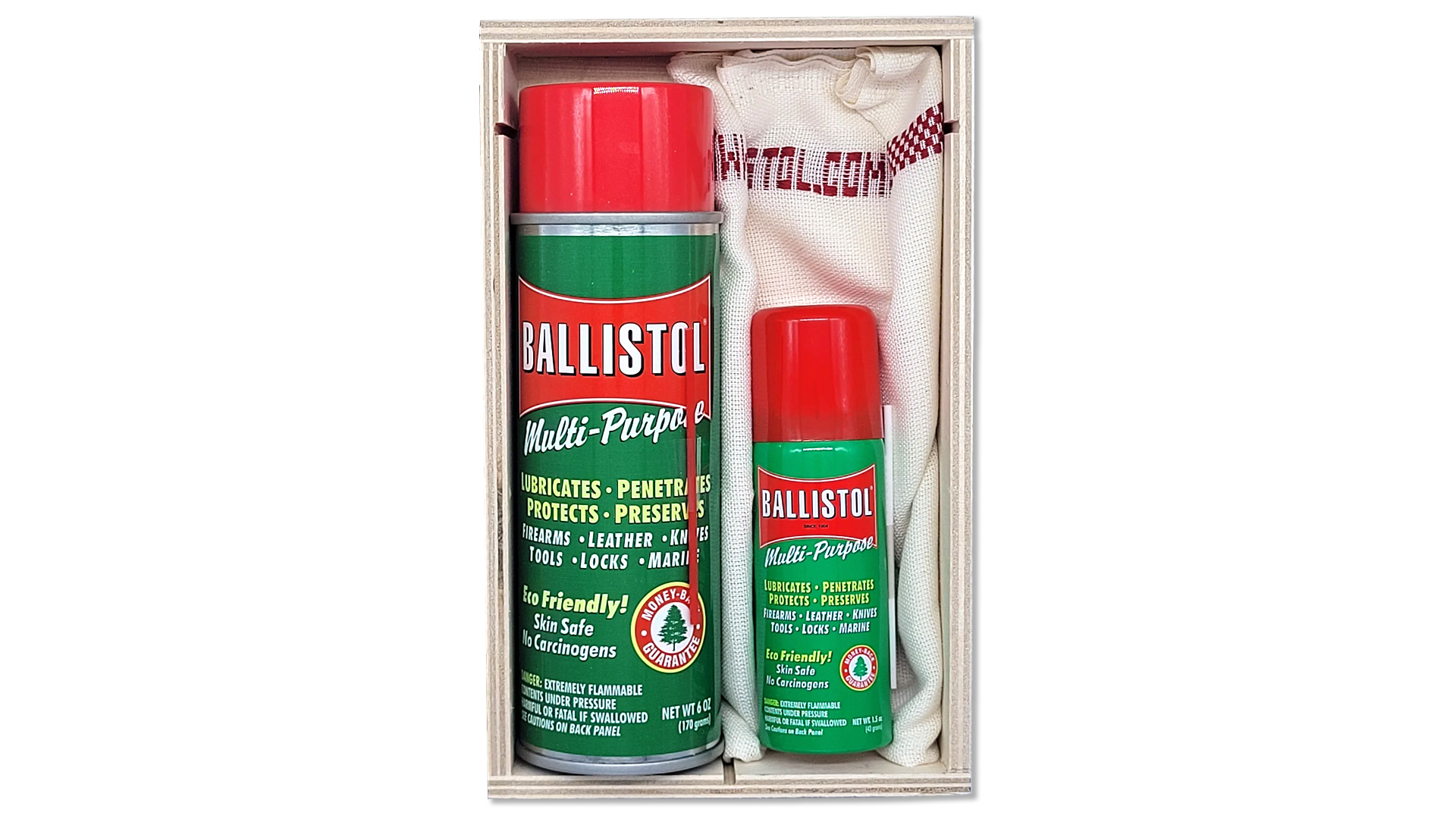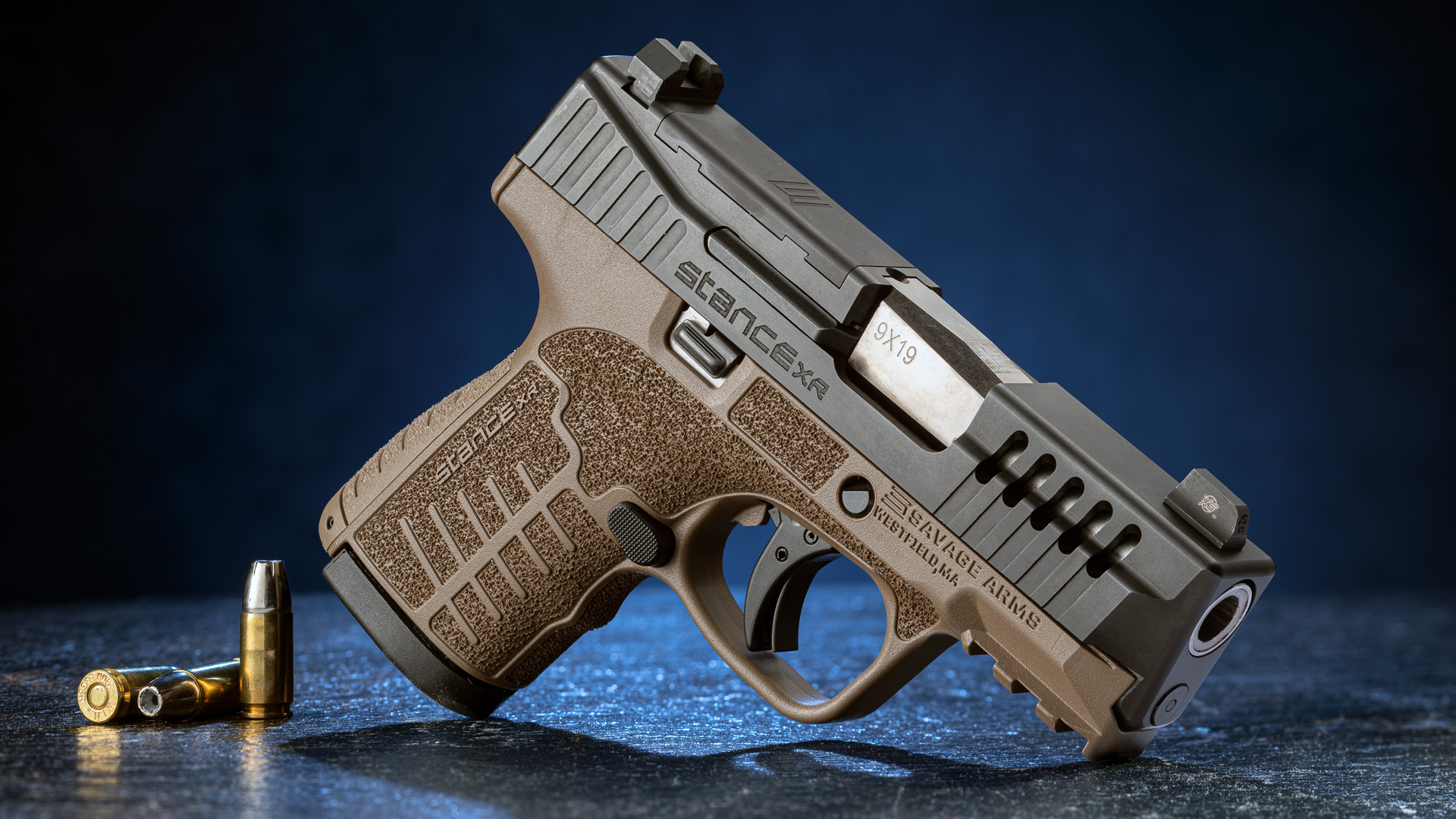
8/20/2012
The .375 H&H Magnum was introduced by English gunmakers Holland & Holland in 1912 as the .375 Belted Rimless Nitro Express. One of the first cartridges to feature a belt, the sharp taper of the case resulted in very smooth feeding from the magazine, but also created a shoulder unsuitable for headspacing. Therefore, the then-new cartridge was designed with a raised band, or belt, at the rear of the case on which the load could be headspaced.
The .375 H&H Mag.’s development was a direct result of the popularity being gained in Africa and India by the German Mauser 9.3x62 mm developed by Otto Bock in Germany in 1905. That much less expensive, yet highly effective, cartridge/rifle combination was becoming more popular than—and outselling—the expensive English doubles widely used at that time for hunting dangerous game. In response, the English gunmakers began experimenting with various cartridge designs in order to come up with an alternative to the 9.3x62 mm, and the .375 H&H Mag. was Holland’s contribution.
The overall length of the .375 H&H Mag. cartridge is 3.6 inches—too long for a standard action, so Hollands opted for the longer square-bridge Mauser action on which to base guns for its new cartridge. That action became synonymous with the .375 H&H Mag. although it was used for other long cartridges as well.
Initially, three bullet weights were offered: 235 grains at 2,964 fps; 270 grains at 2,694 fps; and 300 grains at 2,645 fps. The 270-grain load on plains game and the 300-grain load on dangerous game proved most popular, while the 235-grain load was intended for shots at longer ranges.
Hollands also claimed that many of the new .375 H&H Mag. rifles could produce close to the same point of impact with the three different bullet weights at all reasonable hunting ranges. An unusual achievement for any cartridge, this claim has been independently borne out and is of considerable importance to the hunter using different bullet weights whilst after more than one species of game, as it eliminates the necessity to re-adjust sights.
Also of importance, a rimmed version of the new cartridge was produced for use in double and single-shot rifles and proved very successful. It was known as the .375 Flanged Magnum and, for a lady hunter who might prefer a double to a bolt-action rifle, it was ideal. The ballistics of the two cartridges were very similar.
It was not long before glowing reports concerning the new rifle-and-cartridge combination’s outstanding effectiveness started circulating from hunters who had purchased the new .375 H&H Mag. for use on hunting trips to Africa, India and Alaska. The outstanding “knock-down” qualities of the 300-grain bullets, in conjunction with the increased velocity, became immediately apparent, and that increased velocity driving lighter bullets also established the .375 H&H Mag. as a flat-shooting, reasonably long-range cartridge. Holland & Holland would appear to not only have equaled the German 9.3x62 mm’s performance, but had actually improved upon it by quite a margin.
The chambering sold well in Europe and America throughout the period between the two world wars, and its enviable reputation became legendary especially among safari and big game hunters. Nonetheless, due to the cost of the rifle and its ammunition (a .375 H&H Mag. rifle cost about double that of a 9.3x62 mm Mauser), the Mausers and Mannlichers dominated the market in colonial Africa. Although a .375 H&H Mag. was on most serious hunters’ wish lists, the higher cost was a barrier to entry.
The considerable price differential resulted from the development of very sophisticated mass production techniques by German and Austrian manufacturers. These processes enabled them to produce well-made and finely finished rifles priced much lower than the British equivalents, most of which were handmade.
I can well remember as a schoolboy spending hours admiring the rows of superb Mausers and Mannlichers ranging from 6.5 mm to 10.75 mm in Charles Heyers’s Nairobi, Kenya, gun store. The prices ranged from 15 to 20 East African pounds, a very reasonable sum, though a fortune to me back then.
The first American company to produce bolt-action rifles chambered for the .375 H&H Mag. was Winchester with its Model 70 in 1937. My first introduction to the .375 H&H Mag. was in 1947 when I was employed on a three-month hunting safari conducted by Philip Percival. The clients brought with them a number of rifles that had been used on a safari with Percival prior to World War I. One of those was a .375 H&H Mag. I was well aware of its reputation and, having studied its ballistics, I was anxious to see it perform on game.
When the rifles arrived in Nairobi I took the opportunity to examine the Holland’s .375 H&H Mag. and was immediately struck by its clean classic lines. They included a slender pistol grip, adequate but not bulky fore-end, and, of course, the beautifully shaped butt with cheekpiece and rubber recoil pad.
The Mauser square-bridge action was the first I had ever seen, and I was impressed by its rugged appearance and how smoothly it cycled. I also noted with interest the dropped magazine box to accommodate the larger cartridges and the reshaping of the wood forward of the trigger guard to accommodate it, which I thought enhanced the appearance of the rifle.
The only thing that seemed incongruous to me was the rather angular foresight ramp, the sort of ramp one might expect to find on a military rifle. It did not appear to harmonize with the classic lines of the rifle. I am sure it was very effective with its little built-in foresight protector, but to me it looked a little out of place.
The rifle saw little use by the clients on the safari, only the wife was hunting seriously, and she was an older lady unable to handle anything heavier than a .30-’06 Sprg. Fortunately for me, I was invited to use the .375 Mag., as often as I wished, and as there was plenty of ammunition in both 270- and 300-grain weights. I gladly availed myself of the kind offer and discovered that using it proved to be a new and rewarding experience.
I soon realized that all the claims I had read about the .375 H&H Mag. cartridge’s performance were true and—in my opinion—possibly understated. And I did find that at 100 yards the 270- and 300-grain bullets impacted close enough to each other so as not to, for all practical hunting purposes, require sight adjustment.
Used on buffalo, the 300-grain solid, if the shot was well placed, would usually result in one shot, on the spot kills. The 270-grain soft-nose bullet was capable of reaching out to several hundred yards merely by holding a little higher on the intended target. This was a versatile combination indeed, a truly all-round rifle such as I had never seen before—powerful, accurate, and dependable with the ability to reach out there if necessary with enough retained power to do the job.
This particular safari was the commencement of my lifelong love affair with the .375 H&H Mag., and I determined to own one myself as soon as I could. That did not come about until 1950 when, at the end of a three-month safari, I was presented with a Winchester Model 70 in .375 H&H Mag. by the clients.
It was the first of several .375 H&H Mag. Winchesters I have owned, and I cannot recollect being on a safari since without a .375 in the gun racks of the hunting car. Regrettably I have never owned a genuine Holland & Holland-made .375 H&H Mag.
The .375 H&H Mag. played a significant role in the post World War II era in the African safari scene. During the late 1940s and early 1950s hunting safaris from overseas, mostly the United States, began to trickle back to East Africa and as new rifles were not available in Nairobi, prospective hunters brought their own with them. Rifles chambered for the .30-’06 Sprg. and .375 H&H Mag. cartridges were by far the most common, although there was a small percentage of other calibers as well. A few English rifles showed up, belonging to clients who had been on safari prior to the war, such as the Holland’s .375 H&H Mag. previously discussed.
It had become customary on pre-war safaris for clients to hire a heavy double rifle from the safari company for elephant, rhino and buffalo, and the .375’s role had been largely for use on the larger plains game and lion. However, due to the advent of convenient and time-saving air travel, combined with the writings of people such as Hemingway, Ruark and O’Connor, increasing numbers of people decided to undertake an African safari, and many of them had minimal hunting experience and were not too familiar in the use of firearms either. It takes time and much practice to shoot a heavy double rifle well, and having read stories about the horrendous recoil attributed to the heavy English doubles, some of the new generation of clients were possibly more apprehensive of the rifles they were about to use, than they were of the animal on which they would be using them. This situation did not contribute to accurate shooting and resulted in many missed shots, wounded animals and “messy” followups. I personally saw an elephant run off after having been cleanly missed by both barrels at less than 40 yards.
This time of transition served its purpose however, because as time went by, clients, encouraged in many cases by the professional hunter, began using the .375 H&H Mag. instead of the heavy doubles on the “big three.” The change proved most rewarding, as more accurate placement of bullets resulted in cleaner kills and less time wasted, not to mention the danger involved in following up on wounded animals. In this era, the .375 H&H Mag. was confirming its status as a very effective dangerous game cartridge, and many gunmakers worldwide began chambering their rifles for it. Additionally, new government regulations in a number of African countries required that the minimum legal caliber for hunting thick-skinned dangerous animals be .375. These requirements forced many users of sub-caliber rifles to invest in a larger one, and the logical choice was a .375 H&H Mag.
It is impossible to estimate how many .375s are owned by people living in Africa today, there must be many thousands, and although manufactured by different companies from different countries, they all owe their existence to Holland’s design dating back to 1912.
The success of the .375 H&H Mag. also resulted in a range of so-called “improved” versions of the cartridge, usually by fire-forming the original case in an enlarged chamber in order to accommodate more powder and, thereby, increase velocity. In my opinion, these “improved” versions do not demonstrate any real advantage over the original Holland & Holland design—which is an extremely well balanced cartridge—other than some extra striking energy and a somewhat flatter trajectory. They certainly produce more noise, more muzzle blast and more recoil. To add to the downside, the ammunition becomes a handloading proposition.
Members of various groups, such as professional hunter associations, game control officers, and professional guide associations, have on a number of occasions voted by a considerable margin in favor of the .375 H&H Mag.’s acceptance as the best all-round hunting caliber. This distinction has been earned by the outstanding and dependable performance of rifle and cartridge combinations throughout a period of 100 years from all corners of the earth. From the frozen wastes of the North and South Poles to the sweltering deserts of Africa and Asia, to the great primeval jungles in other parts of the world, the .375 has delivered. Today, with so many rifles chambered for this cartridge, it is usually possible to obtain ammunition in many countries—sometimes in quite remote places—a considerable advantage to the travelling hunter.
For me, the .375 H&H Mag. is the most outstanding and versatile cartridge ever developed, and no matter how hard some may try, its track record will never be equaled.





































